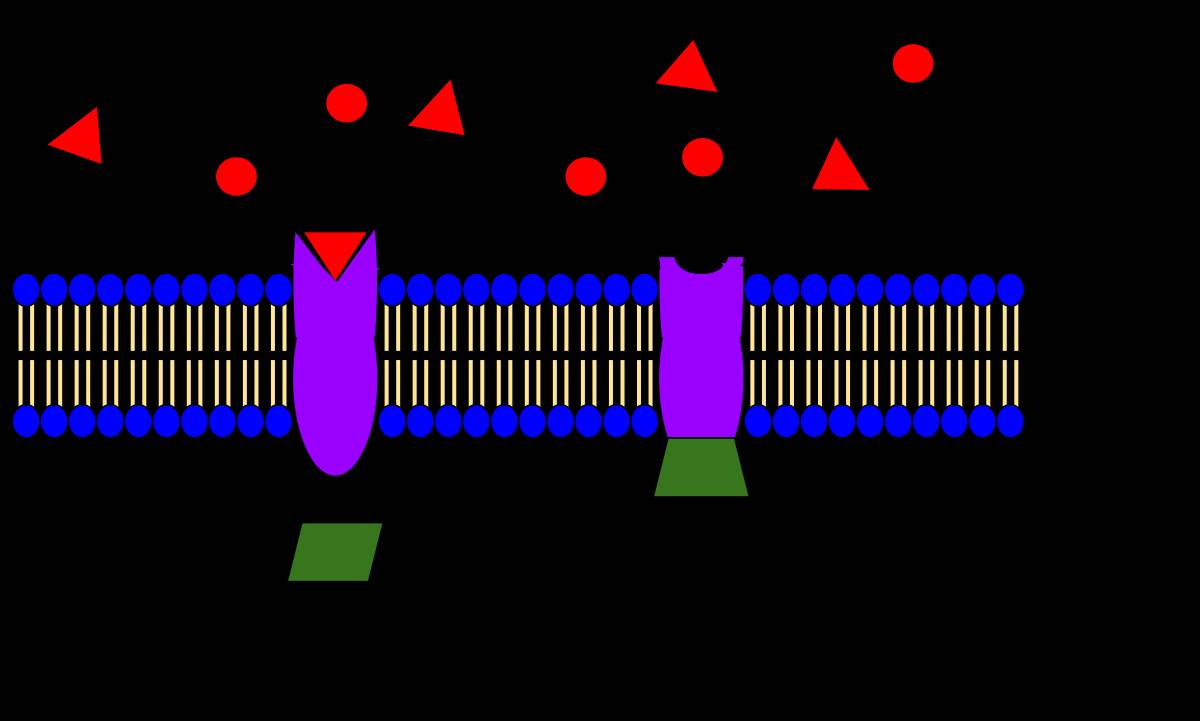Membrane Receptors: Crucial Players in Cellular Signaling
Introduction
Membrane receptors are pivotal elements in cellular communication, acting as intermediaries that convey extracellular signals into intracellular responses. These receptors, embedded in the lipid bilayer of the cell membrane, exhibit diversity in both structure and function, enabling cells to detect and react to a wide spectrum of signals, ranging from neurotransmitters to hormones. This essay delves into the fundamental role of membrane receptors in cell signaling, their categorization, operational mechanisms, and their significance in various physiological processes.
I. Categorization of Membrane Receptors
Membrane receptors are categorized into several main groups based on their structural and functional attributes. The primary receptor types include:
G Protein-Coupled Receptors (GPCRs): GPCRs, also known as seven-transmembrane receptors, represent one of the most extensive and diverse receptor families. They consist of seven alpha-helical transmembrane segments and are linked to intracellular G proteins. Activation of GPCRs induces a conformational change that enables them to interact with G proteins, initiating intracellular signaling cascades. This class of receptors is involved in a multitude of physiological processes, including neurotransmission, hormone signaling, and immune responses.
Receptor Tyrosine Kinases (RTKs): RTKs are transmembrane proteins endowed with intrinsic kinase activity. Binding of ligands to these receptors leads to receptor dimerization and autophosphorylation, triggering the activation of downstream signaling pathways. RTKs play a pivotal role in cell growth, differentiation, and proliferation, making them central figures in cancer biology.
Ion Channel Receptors: Ion channel receptors form transmembrane pores that can be selectively opened or closed in response to specific ligand binding. These receptors regulate the flow of ions across the cell membrane, influencing membrane potential and cellular excitability. For example, ligand-gated ion channels are essential components in neuronal signaling, facilitating the rapid transmission of electrical signals.
Nuclear Receptors: In contrast to the aforementioned receptors, nuclear receptors are situated in the cell's cytoplasm or nucleus. Upon ligand binding, they translocate to the nucleus and act as transcription factors, modulating gene expression. This receptor class is involved in regulating a wide spectrum of processes, including metabolism and immune responses.
II. Mechanisms of Operation
The mechanisms through which membrane receptors convey signals into the cell are diverse and finely regulated. The general process can be outlined as follows:
Ligand Binding: The signaling process typically commences with the binding of a specific ligand, such as a hormone or neurotransmitter, to its corresponding receptor. This interaction elicits a conformational change in the receptor protein, often exposing or activating its intracellular signaling domain.
Activation of Downstream Signaling: Upon activation, membrane receptors initiate intracellular signaling cascades through various means. GPCRs trigger the activation of intracellular G proteins, RTKs undergo autophosphorylation and recruit downstream effectors, ion channel receptors facilitate ion flow, and nuclear receptors relocate to the nucleus to regulate gene expression.
Signal Amplification: A vital characteristic of membrane receptor signaling is signal amplification. A single event of ligand-receptor binding can result in the activation of multiple downstream effectors, leading to a robust cellular response. This amplification is critical for enabling cells to respond effectively to low concentrations of extracellular ligands.
Termination of Signaling: To prevent prolonged or excessive signaling, mechanisms are in place to terminate receptor activity. This includes ligand dissociation, receptor internalization, and the action of phosphatases and other negative regulators, all contributing to signal termination.
III. Physiological Significance
Membrane receptors are integral to a myriad of physiological processes, and their malfunction can give rise to various diseases. Here are a few instances of their significance:
Nervous System Function: Neurotransmitter receptors, encompassing ion channels like the NMDA receptor and GPCRs such as the dopamine receptor, play a fundamental role in neuronal communication. Aberrations in these receptors are associated with conditions like Alzheimer's disease and schizophrenia.
Hormone Signaling: Hormone receptors, including the insulin receptor (an RTK) and the glucocorticoid receptor (a nuclear receptor), govern glucose metabolism and immune responses, respectively. Irregularities in hormone receptor signaling underlie conditions such as diabetes and autoimmune diseases.
Cancer Biology: Anomalies in the activation of RTKs and other membrane receptors are a hallmark of cancer. Mutations or heightened expression of these receptors can drive uncontrolled cell growth and tumor development. Targeting these receptors has emerged as a fundamental strategy in cancer therapy.
Conclusion
Membrane receptors serve as the linchpin in the intricate web of cellular communication. Their diverse structures and mechanisms of operation empower cells to perceive and respond to a wide array of signals. From neurotransmission to immune responses, these receptors assume pivotal roles in numerous physiological processes. Gaining an understanding of their functions and dysregulation has paved the way for the development of targeted therapies for a spectrum of diseases, underscoring the critical significance of membrane receptors in the realms of biology and medicine.

























Total Comments: 0